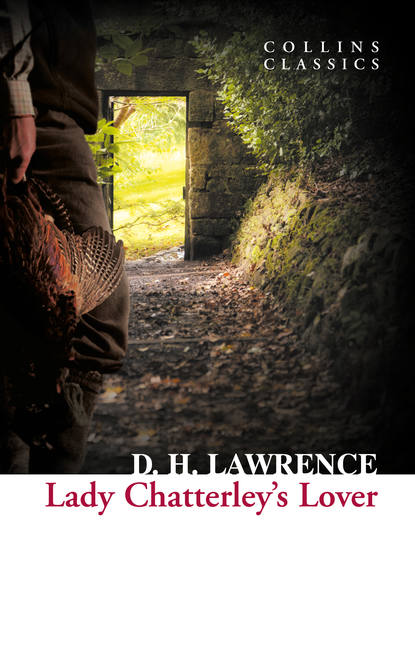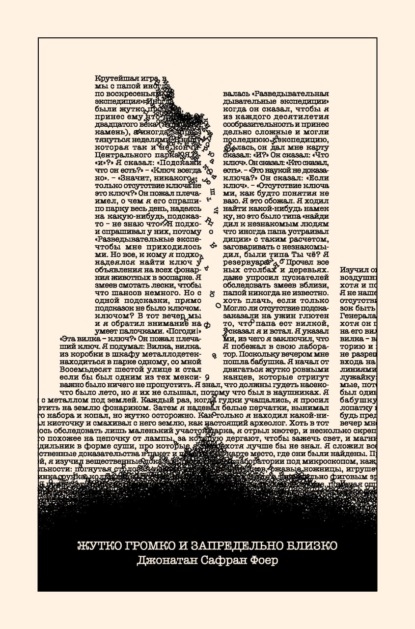
Текст
отзывы: 0 | рейтинг: 0
Lady Chatterley’s Lover
Язык:
Английский
Тип:
Текст
Год издания:
2019
Полная версия
Полная версия
Lady Chatterley’s Lover
D. H. Lawrence
LADY CHATTERLEY’S LOVER was banned on its publication in 1928, creating a storm of controversy. Lawrence tells the story of Constance Chatterley’s marriage to Sir Clifford, an aristocratic intellectual who is paralyzed from the waist down after the First World War. Desperate for an heir and embarrassed by his inability to satisfy his wife, Clifford suggests that she have an affair. Constance, troubled by her husband’s words, finds herself involved in a passionate relationship with their gamekeeper, Oliver Mellors.Lawrence’s vitriolic denunciations of industrialism and class division come together in his vivid depiction of the profound emotional and physical connection between a couple otherwise divided by station and society.
LADY CHATTERLEY’S LOVER
D. H. Lawrence
Copyright (#ulink_648ce5a9-f1d5-55d4-8b4b-adcb1ad9a789)
Harper Press
An imprint of HarperCollinsPublishers
1 London Bridge Street
London SE1 9GF
WilliamCollinsBooks.com (http://www.WilliamCollinsBooks.com)
David Herbert Lawrence asserts the moral right to be identified as the author of this work
A catalogue record for this book is available from the British Library
Life & Times section © HarperCollinsPublishers Ltd Gerard Cheshire asserts his moral rights as author of the Life & Times section Classic Literature: Words and Phrases adapted from Collins English Dictionary
All rights reserved under International and Pan-American Copyright Conventions. By payment of the required fees, you have been granted the non-exclusive, non-transferable right to access and read the text of this e-book on-screen. No part of this text may be reproduced, transmitted, downloaded, decompiled, reverse engineered, or stored in or introduced into any information storage and retrieval system, in any form or by any means, whether electronic or mechanical, now known or hereinafter invented, without the express written permission of HarperCollins.
Source ISBN: 9780007925551
Ebook Edition © May 2013 ISBN: 9780007516995
Version: 2015-11-30
Contents
Title Page (#u8dfc5c30-2229-5cc6-a9b4-53f6bf2cc3fc)
Copyright (#u465894e3-820e-50f3-8f7e-35a18ac312ef)
History of Collins (#ucb6ab128-eeb0-5a3d-bb96-12120ec15b11)
Life & Times (#u4719eaad-81bf-5643-bdcb-6d7a7856cc32)
Chapter 1 (#u18cce722-2d18-56c2-ab07-22a36a917b66)
Chapter 2 (#u74cd44aa-a604-5616-8543-dee58433456a)
Chapter 3 (#u13427ea2-8a7c-5a9d-b5bd-056c7a453652)
Chapter 4 (#u14191065-30e8-5e6f-bbcb-3a026f6c8d87)
Chapter 5 (#ufc70b7c1-0ab9-5095-bcb5-1b425fb345e4)
Chapter 6 (#u7318fe3e-e22c-57fb-8206-aea235653de5)
Chapter 7 (#u33dbd648-e706-5ab3-895f-21d44f50e9a4)
Chapter 8 (#litres_trial_promo)
Chapter 9 (#litres_trial_promo)
Chapter 10 (#litres_trial_promo)
Chapter 11 (#litres_trial_promo)
Chapter 12 (#litres_trial_promo)
Chapter 13 (#litres_trial_promo)
Chapter 14 (#litres_trial_promo)
Chapter 15 (#litres_trial_promo)
Chapter 16 (#litres_trial_promo)
Chapter 17 (#litres_trial_promo)
Chapter 18 (#litres_trial_promo)
Chapter 19 (#litres_trial_promo)
Classic Literature: Words and Phrases adapted from the Collins English Dictionary (#litres_trial_promo)
About the Publisher (#litres_trial_promo)
History of Collins (#ulink_69b447be-ea58-5903-a076-6598025bd983)
In 1819, millworker William Collins from Glasgow, Scotland, set up a company for printing and publishing pamphlets, sermons, hymn books and prayer books. That company was Collins and was to mark the birth of HarperCollins Publishers as we know it today. The long tradition of Collins dictionary publishing can be traced back to the first dictionary William published in 1824, Greek and English Lexicon. Indeed, from 1840 onwards, he began to produce illustrated dictionaries and even obtained a licence to print and publish the Bible.
Soon after, William published the first Collins novel, Ready Reckoner; however, it was the time of the Long Depression, where harvests were poor, prices were high, potato crops had failed and violence was erupting in Europe. As a result, many factories across the country were forced to close down and William chose to retire in 1846, partly due to the hardships he was facing.
Aged 30, William’s son, William II took over the business. A keen humanitarian with a warm heart and a generous spirit, William II was truly ‘Victorian’ in his outlook. He introduced new, up-to-date steam presses and published affordable editions of Shakespeare’s works and ThePilgrim’s Progress, making them available to the masses for the first time. A new demand for educational books meant that success came with the publication of travel books, scientific books, encyclopaedias and dictionaries. This demand to be educated led to the later publication of atlases and Collins also held the monopoly on scripture writing at the time.
In the 1860s Collins began to expand and diversify and the idea of ‘books for the millions’ was developed. Affordable editions of classical literature were published and in 1903 Collins introduced 10 titles in their Collins Handy Illustrated Pocket Novels. These proved so popular that a few years later this had increased to an output of 50 volumes, selling nearly half a million in their year of publication. In the same year, The Everyman’s Library was also instituted, with the idea of publishing an affordable library of the most important classical works, biographies, religious and philosophical treatments, plays, poems, travel and adventure. This series eclipsed all competition at the time and the introduction of paperback books in the 1950s helped to open that market and marked a high point in the industry.
HarperCollins is and has always been a champion of the classics and the current Collins Classics series follows in this tradition – publishing classical literature that is affordable and available to all. Beautifully packaged, highly collectible and intended to be reread and enjoyed at every opportunity.
Life & Times (#ulink_75aa67cf-f249-5239-a3c9-030951644179)
Post-Victorian Britain
David Herbert Lawrence was a creative talent who consistently tested the boundaries of acceptability through his work. He viewed post-Victorian Britain as morally bankrupt, due to the effects of industrialisation and the associated changes in social structure, and was generally regarded as anti-establishment by his contemporaries. The sexual content of his literature was considered by many at the time as little more than pornography prose. While other writers merely implied instances of sexual encounter in their work, Lawrence wrote detailed descriptive accounts of his characters’ sexual exploits. He also dared to suggest that class divides were crossed for want of sexual gratification, and for that he became something of a social pariah.
Lawrence was reportedly sexually confused in his early life. He had intimacies with young men as well as women and although in his work there are no overtly homosexual encounters, his use of the term ‘lovers’ does suggest that Lawrence was hinting at gender ambiguity. His work shocked polite society as it was, because the plots could be boiled down to a contest between love and lust.
Shortly after the outbreak of World War I, Lawrence married a German divorcee named Frieda Weekley. He also publicly voiced his anti-war views, which were at odds with the majority of the British public, who displayed a strong fighting spirit and will to win. The German connection and his expressed contempt meant that Lawrence and his wife were treated with a good deal of suspicion. In addition to this, Lawrence was investigated for obscenity in his writing. Everything came to a head when he and his wife were accused of spying for the Germans. They lived on the Cornish coast and were accused of signalling information to German U-boats. By 1917, the Lawrences had been forced to relocate to central England, away from the coastline, with use of the Defence of the Realm Act.
With the capitulation of the Germans in 1918, the war was ended and the Lawrences opted for voluntary exile abroad. In 1919 they moved to Italy and spent three years exploring southern Europe and a few years later, in 1922, they emigrated to the United States via Australia. Eventually, Lawrence’s ill health forced them back to Europe, where he received treatment for tuberculosis.
Lady Chatterley’s Lover and Obscenity Trials
In his final years, Lawrence drafted his most notorious novel, Lady Chatterley’s Lover, published in 1928, two years before his early death at the age of 44. The book caused an outrage and was initially banned from publication.
By today’s standards the plot is not especially racy, but at the time of its publication, the book caused an absolute scandal. This was due, in part, to the explicit sexual content, but also for the revelation that people have extramarital affairs. This was also the story of a refined woman falling for the animal charms of a workman. On top of all of this, the author made gratuitous use of highly taboo sexual slang in his prose, which lent the story a brutal honesty that many found difficult to accept.
In fact, the novel was not made available to the British public until 1960, when Penguin Books took the matter to court to contest the Obscene Publications Act of 1959, serving to redefine British attitudes to sex and literature. In other countries, varying controversial and expurgated versions have been published to lessen the impact of the language. It wasn’t until the sexual revolution of the 1960s that Britain was ready for this novel, and the jury at the obscenity trial took five days at court to decide that the book did not subvert morals or religion. On its first day of publication, Lady Chatterley’s Lover sold 200,000 copies.
Culture, Etiquette – and the Place of Sex
D. H. Lawrence
LADY CHATTERLEY’S LOVER was banned on its publication in 1928, creating a storm of controversy. Lawrence tells the story of Constance Chatterley’s marriage to Sir Clifford, an aristocratic intellectual who is paralyzed from the waist down after the First World War. Desperate for an heir and embarrassed by his inability to satisfy his wife, Clifford suggests that she have an affair. Constance, troubled by her husband’s words, finds herself involved in a passionate relationship with their gamekeeper, Oliver Mellors.Lawrence’s vitriolic denunciations of industrialism and class division come together in his vivid depiction of the profound emotional and physical connection between a couple otherwise divided by station and society.
LADY CHATTERLEY’S LOVER
D. H. Lawrence
Copyright (#ulink_648ce5a9-f1d5-55d4-8b4b-adcb1ad9a789)
Harper Press
An imprint of HarperCollinsPublishers
1 London Bridge Street
London SE1 9GF
WilliamCollinsBooks.com (http://www.WilliamCollinsBooks.com)
David Herbert Lawrence asserts the moral right to be identified as the author of this work
A catalogue record for this book is available from the British Library
Life & Times section © HarperCollinsPublishers Ltd Gerard Cheshire asserts his moral rights as author of the Life & Times section Classic Literature: Words and Phrases adapted from Collins English Dictionary
All rights reserved under International and Pan-American Copyright Conventions. By payment of the required fees, you have been granted the non-exclusive, non-transferable right to access and read the text of this e-book on-screen. No part of this text may be reproduced, transmitted, downloaded, decompiled, reverse engineered, or stored in or introduced into any information storage and retrieval system, in any form or by any means, whether electronic or mechanical, now known or hereinafter invented, without the express written permission of HarperCollins.
Source ISBN: 9780007925551
Ebook Edition © May 2013 ISBN: 9780007516995
Version: 2015-11-30
Contents
Title Page (#u8dfc5c30-2229-5cc6-a9b4-53f6bf2cc3fc)
Copyright (#u465894e3-820e-50f3-8f7e-35a18ac312ef)
History of Collins (#ucb6ab128-eeb0-5a3d-bb96-12120ec15b11)
Life & Times (#u4719eaad-81bf-5643-bdcb-6d7a7856cc32)
Chapter 1 (#u18cce722-2d18-56c2-ab07-22a36a917b66)
Chapter 2 (#u74cd44aa-a604-5616-8543-dee58433456a)
Chapter 3 (#u13427ea2-8a7c-5a9d-b5bd-056c7a453652)
Chapter 4 (#u14191065-30e8-5e6f-bbcb-3a026f6c8d87)
Chapter 5 (#ufc70b7c1-0ab9-5095-bcb5-1b425fb345e4)
Chapter 6 (#u7318fe3e-e22c-57fb-8206-aea235653de5)
Chapter 7 (#u33dbd648-e706-5ab3-895f-21d44f50e9a4)
Chapter 8 (#litres_trial_promo)
Chapter 9 (#litres_trial_promo)
Chapter 10 (#litres_trial_promo)
Chapter 11 (#litres_trial_promo)
Chapter 12 (#litres_trial_promo)
Chapter 13 (#litres_trial_promo)
Chapter 14 (#litres_trial_promo)
Chapter 15 (#litres_trial_promo)
Chapter 16 (#litres_trial_promo)
Chapter 17 (#litres_trial_promo)
Chapter 18 (#litres_trial_promo)
Chapter 19 (#litres_trial_promo)
Classic Literature: Words and Phrases adapted from the Collins English Dictionary (#litres_trial_promo)
About the Publisher (#litres_trial_promo)
History of Collins (#ulink_69b447be-ea58-5903-a076-6598025bd983)
In 1819, millworker William Collins from Glasgow, Scotland, set up a company for printing and publishing pamphlets, sermons, hymn books and prayer books. That company was Collins and was to mark the birth of HarperCollins Publishers as we know it today. The long tradition of Collins dictionary publishing can be traced back to the first dictionary William published in 1824, Greek and English Lexicon. Indeed, from 1840 onwards, he began to produce illustrated dictionaries and even obtained a licence to print and publish the Bible.
Soon after, William published the first Collins novel, Ready Reckoner; however, it was the time of the Long Depression, where harvests were poor, prices were high, potato crops had failed and violence was erupting in Europe. As a result, many factories across the country were forced to close down and William chose to retire in 1846, partly due to the hardships he was facing.
Aged 30, William’s son, William II took over the business. A keen humanitarian with a warm heart and a generous spirit, William II was truly ‘Victorian’ in his outlook. He introduced new, up-to-date steam presses and published affordable editions of Shakespeare’s works and ThePilgrim’s Progress, making them available to the masses for the first time. A new demand for educational books meant that success came with the publication of travel books, scientific books, encyclopaedias and dictionaries. This demand to be educated led to the later publication of atlases and Collins also held the monopoly on scripture writing at the time.
In the 1860s Collins began to expand and diversify and the idea of ‘books for the millions’ was developed. Affordable editions of classical literature were published and in 1903 Collins introduced 10 titles in their Collins Handy Illustrated Pocket Novels. These proved so popular that a few years later this had increased to an output of 50 volumes, selling nearly half a million in their year of publication. In the same year, The Everyman’s Library was also instituted, with the idea of publishing an affordable library of the most important classical works, biographies, religious and philosophical treatments, plays, poems, travel and adventure. This series eclipsed all competition at the time and the introduction of paperback books in the 1950s helped to open that market and marked a high point in the industry.
HarperCollins is and has always been a champion of the classics and the current Collins Classics series follows in this tradition – publishing classical literature that is affordable and available to all. Beautifully packaged, highly collectible and intended to be reread and enjoyed at every opportunity.
Life & Times (#ulink_75aa67cf-f249-5239-a3c9-030951644179)
Post-Victorian Britain
David Herbert Lawrence was a creative talent who consistently tested the boundaries of acceptability through his work. He viewed post-Victorian Britain as morally bankrupt, due to the effects of industrialisation and the associated changes in social structure, and was generally regarded as anti-establishment by his contemporaries. The sexual content of his literature was considered by many at the time as little more than pornography prose. While other writers merely implied instances of sexual encounter in their work, Lawrence wrote detailed descriptive accounts of his characters’ sexual exploits. He also dared to suggest that class divides were crossed for want of sexual gratification, and for that he became something of a social pariah.
Lawrence was reportedly sexually confused in his early life. He had intimacies with young men as well as women and although in his work there are no overtly homosexual encounters, his use of the term ‘lovers’ does suggest that Lawrence was hinting at gender ambiguity. His work shocked polite society as it was, because the plots could be boiled down to a contest between love and lust.
Shortly after the outbreak of World War I, Lawrence married a German divorcee named Frieda Weekley. He also publicly voiced his anti-war views, which were at odds with the majority of the British public, who displayed a strong fighting spirit and will to win. The German connection and his expressed contempt meant that Lawrence and his wife were treated with a good deal of suspicion. In addition to this, Lawrence was investigated for obscenity in his writing. Everything came to a head when he and his wife were accused of spying for the Germans. They lived on the Cornish coast and were accused of signalling information to German U-boats. By 1917, the Lawrences had been forced to relocate to central England, away from the coastline, with use of the Defence of the Realm Act.
With the capitulation of the Germans in 1918, the war was ended and the Lawrences opted for voluntary exile abroad. In 1919 they moved to Italy and spent three years exploring southern Europe and a few years later, in 1922, they emigrated to the United States via Australia. Eventually, Lawrence’s ill health forced them back to Europe, where he received treatment for tuberculosis.
Lady Chatterley’s Lover and Obscenity Trials
In his final years, Lawrence drafted his most notorious novel, Lady Chatterley’s Lover, published in 1928, two years before his early death at the age of 44. The book caused an outrage and was initially banned from publication.
By today’s standards the plot is not especially racy, but at the time of its publication, the book caused an absolute scandal. This was due, in part, to the explicit sexual content, but also for the revelation that people have extramarital affairs. This was also the story of a refined woman falling for the animal charms of a workman. On top of all of this, the author made gratuitous use of highly taboo sexual slang in his prose, which lent the story a brutal honesty that many found difficult to accept.
In fact, the novel was not made available to the British public until 1960, when Penguin Books took the matter to court to contest the Obscene Publications Act of 1959, serving to redefine British attitudes to sex and literature. In other countries, varying controversial and expurgated versions have been published to lessen the impact of the language. It wasn’t until the sexual revolution of the 1960s that Britain was ready for this novel, and the jury at the obscenity trial took five days at court to decide that the book did not subvert morals or religion. On its first day of publication, Lady Chatterley’s Lover sold 200,000 copies.
Culture, Etiquette – and the Place of Sex
Другие книги автора:
Популярные книги















